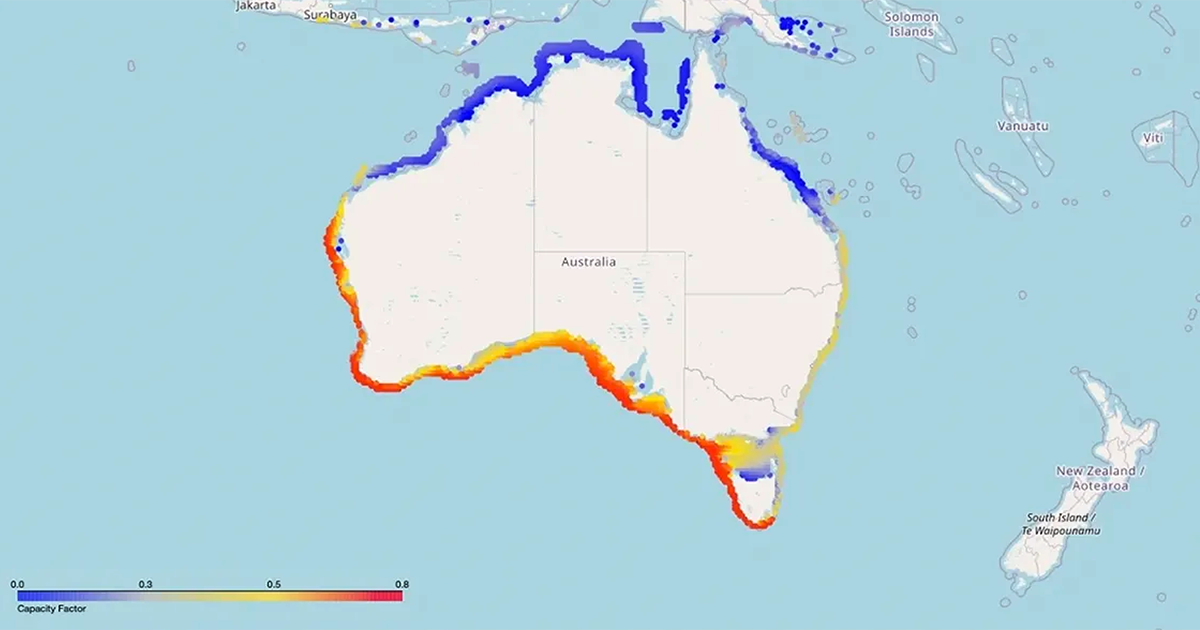“Federal and State Governments in Australia should take a strategic view on wave energy in order to maximize national benefit from a potentially critical national resource.”
This is the overarching recommendation from The Blue Economy Cooperative Research Centre (CRC) following the release of its latest report—Ocean Wave Energy in Australia.
The publication was issued in tandem with ICOE 2024 (International Ocean Energy Exhibition), held for the first time in the southern hemisphere, in Melbourne. The event attracted leaders in the ocean energy space including CorPower Ocean.
The report offers a comprehensive assessment of the status, challenges and opportunities of wave energy in Australia, through an examination of international trends, domestic resource, market dynamics, integration potentials, environmental considerations, regulatory frameworks and social acceptance factors. A similar report published in 2021 helped catalyze the emergence of Australia’s offshore wind industry.
Led by the University of Western Australia, the report outlines seven key recommendations to advance the sector. This includes incorporation into national and state planning, evaluation by the Australian Energy Market Operator, Inclusion in sustainable ocean plan, consistent funding, coastal protection guidelines, data sharing, and climate analysis.
Adding Wave to Australia’s Integrated System Plan
Although the Australian Energy Market Operator (AEMO) does not currently consider wave energy, the report states that wave energy should be evaluated in the Integrated System Plan (ISP) to gauge its potential impact on energy storage needs by 2050.
Evidence from similar markets, like the UK’s EVOLVE study—which CorPower Ocean has supported—shows that adding 10 GW of wave energy could save up to AUD 2.76 billion annually by 2040, thanks to reduced storage and generation demands. For Australia, introducing wave energy is expected to cut storage capacity requirements, translating into lower overall costs.
The National Electricity Market (NEM) forecasts show significant growth in renewable capacity across Australia by 2050, yet a gap in consistent power supply remains. Modelling from three local grids on the south coast has shown consistent results, reinforcing the idea that wave energy could deliver dispatchability and cost benefits across Australia’s southern margin. These findings point to a broader potential, suggesting that the system-wide implications of wave energy can only be fully realized through an integrated national approach.
Boosting the Blue Economy
Australia is aiming to slash emissions by 43% by 2030 and hit an 82% renewable electricity share. According to Blue Economy CRC, wave energy could further boost Australia’s blue AUD 118 billion blue economy by driving opportunities in fabrication, installation and marine operations. Australia already has existing elements that are important for wave energy sector development, such as a skilled workforce for offshore infrastructure and renewable industries.
Research institutions including universities and the Commonwealth Scientific and Industrial Research Organization (CSIRO) add further strength, enabling innovation in the sector. The potential for market expansion includes grid connections and powering remote facilities, particularly in coastal regions that are poised to benefit economically.


